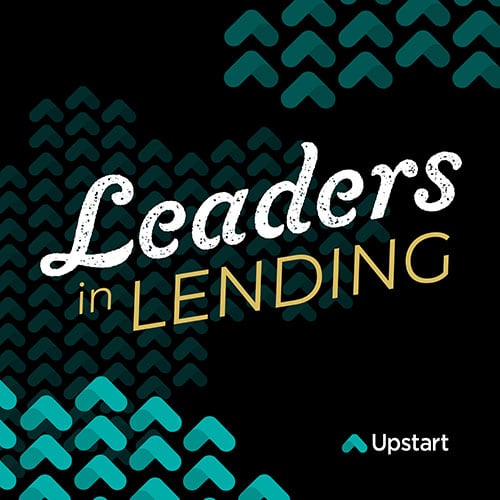Leaders in Lending | Ep. 83
How Specialization Can Win Credit Unions Members
Kayla Selhorst SVP Chief Operating Officer at CME Federal Credit Union, discusses honing in on the products you can specialize in and working with partners to do the rest in order to make operations more efficient, and put members first.


GUEST SPEAKER
Kayla Selhorst
Kayla is responsible for leading and managing lending channels including Mortgages, Consumer Lending, Student Lending, Commercial Lending and Indirect programs. She oversees five Banking locations, a Call Center, Card Services and HSA/IRA services, manages the collections department and is accountable for delinquency and losses. She is also accountable for maximizing revenues, sales, member satisfaction, staffing and minimizing operation losses, executing sales incentive/commission plans, coaching, and responsible for compliance with credit union policies, procedures, and operational integrity.

ABOUT
CME Federal Credit Union
CME Federal Credit Union was established in 1935, serving City of Columbus Firefighters and Police Officers. Their commitment to the financial futures of their members is as strong as the day the credit union started. And today, they extend their commitment to everyone who lives works and worships in Central Ohio.
Key Takeaways
-
Helping loan officers focus on customer relationships
-
Doing more with less by shifting data entry responsibilities
- The real value of predictive lending when using transaction data history


“We can't be all the things to everybody. So what are we going to be really good at and get hyper focused on that and be able to provide that to your consumer really well and efficiently?”

“I think consumers will continue to spend through this economic cycle.”
EPISODE RECAP & SUMMARY
Credit Unions Optimize Strength in Lending
Credit unions can’t be everything to their members, so honing in on the products you can specialize in and working with partners to do the rest makes sense.
That is exactly what our guest today, Kayla Selhorst SVP Chief Operating Officer CME Federal Credit Union, has accomplished — streamlining the lending operations at CME to approve more loans, with less staff. They did this by not only making their operation more efficient, but by putting the members' needs first.
Jeff and Kayla discuss:
- Helping loan officers focus on customer relationships
- Doing more with less by shifting data entry responsibilities
- The real value of predictive lending when using transaction data history
Helping loan officers focus on customer relationships
For many banks and credit unions, the experiences are divided among product lines; what this means for the customer, unfortunately, is a disjointed experience: Such as teams not communicating or a member experience dictated by organizational structure rather than needs. Selhorst is changing that — centralizing consumer and mortgage lending operations.
In the past, her team relied on the branch network: a place for members to get new loans or accounts. But as technology and customer expectations grow, it’s become apparent that this system won’t support the kind of technology and expectation scale they’re experiencing.
She explains, “We would have a loan officer that would have to go from an NSF conversation, to a mortgage conversation, to an auto conversation, or help someone balance their checkbook. So those salespeople could not really focus on sales. So for us centralizing that function, we went from 12 people offering loans down to 4. And we were able to double our loan production because those loan officers could only focus on building that relationship with the customer, finding out what they need in the future and what they need right now.”
Doing more with less by shifting data entry responsibilities
With this new system, the lives of the loan officers have been simplified significantly. Selhorst explains exactly how more business with less people is possible:
It comes down to removing all the processing from the loan officers, such as data entry. Instead, the officer gets on the phone with the customer, finds out what the need is, and then finds the right solution.
Once the conversation happens, they have a partner in processing that takes the loan and does all the necessary paperwork that the officer can then bring back to the customer for closing and relationship building.
“The help with processing helps loan officers hyper focus so they have more time to have those sales conversations.”
The future of physical branches
While the focus for banks and credit unions will be geared more towards email, text, and phone moving forward as they compete with non-traditional providers, the option of a physical branch is still available for those customers that prefer the personal interaction.
“That's where the branches play a role — is more of that consultative, ‘I'm here to help you through a problem,’ and then connect you with an expert within the credit union, whether they're in there or not to help you with your next purchase or problem,” She explains.
Rather than branch employees acting as experts to every institutional offering, they will instead be guides, connecting every employee with the right expert for their problem.
Selhorst describes their new branch layout to include a coffee shop — furthering the notion that physical branches will act as a consultative environment rather than its historical function.
The real value of predictive lending when using transaction data history
While predictive lending has been a common term among financial institutions in recent years, the definition of exactly what it means is still fluid. For Selhorst, it’s about understanding a member’s account and how they’re using the institution.
Imagine you have a member that is overdrawn every 28 days. With predictive lending, that behavior would be flagged so the bank or credit union can reach out to solve the issue.
“It’s about knowing what the member needs before they even do and looking at those themes and how they've used their account prior.”
Recognizing these needs ahead of time also helps to eliminate members turning to outside lenders that will charge them significantly more than Selhorst’s institution would charge them — enabling the support of those existing members while also growing the business overall.
Want to learn more about how Upstart partners with credit unions? Check out this case study mentioned in the episode.




